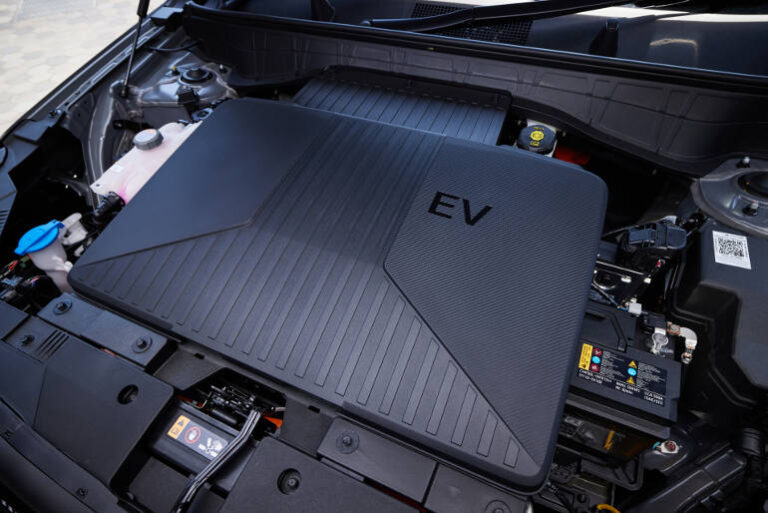In a recent conversation with Fleet News Group, Scott Nargar, Senior Manager of Future Mobility & Government Relations at Hyundai, shared insights on the evolving landscape of fleet electrification in Australia. As the automotive industry transitions towards a more sustainable future, Nargar highlighted key trends, challenges, and opportunities for fleet managers in 2025 and beyond.
Key Trends in Fleet Electrification
According to Nargar, 2024 has seen a significant increase in competition within the low and zero-emission vehicle market. While electric vehicles (EVs) continue to gain traction, hybrid vehicles, particularly from mainstream manufacturers like Hyundai, have seen strong uptake.
“Businesses and novated leasing customers are more conscious of their vehicle choices,” Nargar noted. “Many are taking their first step into electrification through hybrids before transitioning to fully electric models.”
While Hyundai does not currently offer plug-in hybrid vehicles (PHEVs), Nargar acknowledged their growing relevance, especially for businesses requiring extended range without relying entirely on charging infrastructure. The expansion of Hyundai’s EV lineup, including the introduction of the Ioniq 9 and a new smaller EV model, reflects the brand’s commitment to providing diverse options for fleet operators.
Challenges in EV Adoption for Fleets
Despite increased interest, fleets still face challenges in widespread EV adoption. Nargar pointed out that many fleet operators perceive internal combustion engines (ICEs) and hybrids as the easier choice due to concerns around charging accessibility and payment integration.
“The biggest hurdle is the complexity of charging networks. Fleet drivers need a seamless experience similar to traditional fuel cards, where a single card or app can access multiple charging providers,” he explained. “Right now, Australia lacks that interoperability.”
Efforts to integrate payment systems across networks remain slow, creating a fragmented experience for EV drivers. Nargar emphasised that improving this infrastructure is essential for accelerating fleet electrification.
Technology’s Role in Safer, More Efficient Fleets
Beyond electrification, connectivity and telematics will play a crucial role in fleet safety and efficiency. Nargar believes that embedded telematics systems, directly integrated into vehicles by manufacturers, offer greater insights and control compared to aftermarket solutions.
“The challenge is consistency across brands,” he said. “Fleet managers don’t want to juggle multiple portals. There’s a need for industry-wide standardization to streamline reporting and vehicle management.”
Impact of Emission Standards on Fleet Purchasing
The introduction of the New Vehicle Efficiency Standard (NVES) will inevitably influence fleet purchasing decisions. Nargar expects businesses to prioritise low-emission vehicles due to government carbon tracking requirements and corporate sustainability goals.
“Emission regulations will drive greater EV adoption, but it’s the mandatory carbon accounting that will push large companies to act sooner,” he explained. “This shift will also expand the second-hand EV market, making low-emission vehicles more accessible.”
The Future of Fleet Charging
One of the biggest questions for Fleet Managers is how and where to charge EVs. Nargar sees a mix of workplace, home, and public charging as the likely solution, with home charging being particularly effective for take-home vehicles.
However, he stressed that Australia’s public charging infrastructure remains insufficient, especially in metropolitan areas. “We need to stop celebrating the installation of just one or two chargers in a location. Instead, we should be aiming for banks of 10-20 fast chargers, similar to what we see overseas.”
Nargar called for greater involvement from property management companies and businesses to install chargers in shopping centres and high-traffic locations. “DC fast charging should be as ubiquitous as petrol stations. Until then, EV adoption will remain a challenge.”
Conclusion: Is 2025 the Year for Mass EV Fleet Transition?
According to Nargar, fleets are beyond the trial phase and ready to transition. Government leadership, particularly from the ACT and Queensland, has set an example by installing extensive charging infrastructure and electrifying government fleets.
“If more businesses follow their lead, 2025 could be the tipping point,” he concluded.
With improved infrastructure, integrated payment systems, and clearer regulatory incentives, Hyundai believes the momentum for fleet electrification in Australia is set to accelerate.






